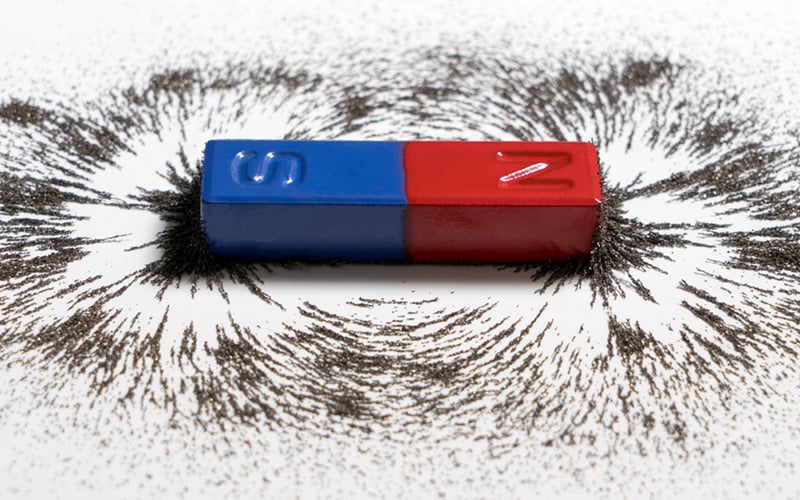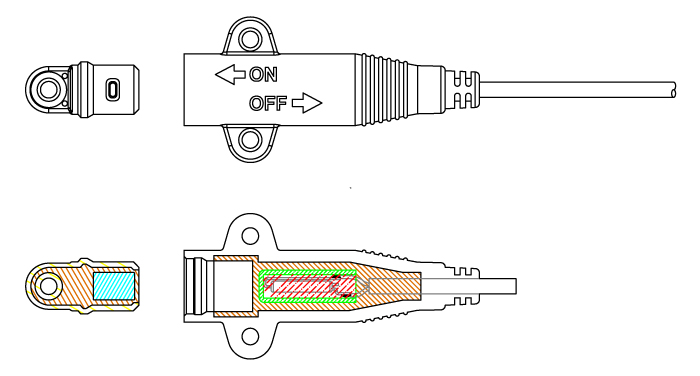Magnetism is such a fascinating and important phenomenon that our world quite literally would not exist without it. Magnetic fields, electromotive force, and electromagnetism are wildly complex subjects while at the same time and at a high level, somewhat simple to understand. What is important is that these principles help electric motors run, earth’s magnetosphere shield civilization, and refrigerator magnets stick unless, of course, your appliances are stainless steel.
There are many products and applications that can benefit from the wonderful properties of magnets, including cable assemblies. One of the most well-known magnet types is neodymium magnets. These types are considered permanent magnets and are always “on” with inherent magnetic properties. Comprised of the elements of Neodymium, Iron, and Boron, these magnet types are completely different when compared to electromagnets. Electromagnet properties are achieved by the passage of electrical current. Pound for pound, neodymium magnets are among the most powerful permanent magnet types in the world and are used where strong attraction forces are needed.
Ferrite magnets are another type of permanent magnet which has special properties and is used throughout the industry for a lesser-known reason. Ferrite beads, ferrites cores, or chokes are inexpensive devices that help filter electrical noise and comply with EMI/EMC regulations. They are available in differing form factors for countless design applications and are made by dozens of manufacturers. Ferrite magnets are comprised of mixtures of ceramic magnets and iron oxide, and when formed in doughnut-like shapes they can help signal integrity within wire bundles. When a data cable is routed through a ferrite’s magnetic field, these passive EMI filters can help eliminate unwanted electrical noise within high-frequency data transmission lines.

Magnet with north and south pole depicted.
Incorporating Ferrites into Your Cable/Wire Assembly
First, it’s important to note that for a ferrite to be effective, the wire must be fed through the center of the ferrite within its magnetic field. Wires can be looped and routed through the ferrite multiple times, with each additional loop helping incrementally improve signal integrity. The majority of ferrites have the wire fed through only once, with designs rarely needing 3 loops or more to meet design objectives. There are 2 types of ferrites that are best suited for cable assemblies, with one type being especially simple to install.
Snap-On Ferrites and Doughnut Ferrites
The first and easiest assembly type is a Snap-On ferrite. These passive suppression devices are magnet halves that are fitted within plastic clamshell cases that snap closed around the wire. They are sized for a wide variety of cable diameters and performance types and are excellent come test day when mixing and matching ferrite choices help pass an aggressive test requirement. Some of the drawbacks of using Snap-On ferrites are that they can be more expensive, they can be removed easily, and they need to be sized to a specific wire’s outer diameter creating an interference fit. None of these issues are necessary showstoppers, but these are facts that designers should consider before it’s too late to make design changes.

Cable assembly with doughnut shaped ferrite.
The second ferrite type is much simpler and is often shaped like a ring or doughnut. These ferrites are continuous circles and need the wires fed through their center opening and onto the wire before connectors are terminated, unlike the Snap-On variety which can be installed and removed anytime. The primary benefit to using this ferrite type is that they are inexpensive and custom overmolding can be easily performed. By overmolding the ferrite, its location can be fixed along the cable, strain relief can be incorporated, and the brittle ferrite magnet itself can be protected from damage.
Overmolding Magnets in Cable Assemblies
Overmolding operations are generally performed to create strain relief to the backside of connectors, but other items such as permanent magnets can be overmolded to solve any number of design challenges. One common application for an overmolded magnet is to be paired with a reed switch. Acting as a normally open or closed switch, reed switches will actuate in the presence of a weak magnetic field. Reed switches can be added to custom cable assemblies to enable the user to open and close the circuit by simply removing the adjacent magnet. An iterative development process may be necessary to achieve the desired switch function and fit.

Overmolded reed switch with magnetic cape.
Overmolded magnets are used in other applications as a means of securing two items together. Usually, a neodymium magnet is overmolded and placed on one side of the connector mate, and a ferrous material or opposite polarity magnet is placed on the other side to achieve attraction. Care must be taken when overmolding magnets because they can be brittle and must be ruggedized or risk breaking or shattering. Fixturing a magnet within an overmold can also be tricky, so it’s best to work towards building samples and testing to make certain it functions as intended.
Overmolded magnets are also frequently used alongside pogo pin style contacts. Because pogo pins provide a quick disconnect function, pairing them with a series of magnets can help the user quickly mate and un-mate the connection. It’s not uncommon for a pair of neodymium magnets to have a separation force of 40 pounds or more, meaning that if the wrong size magnet is chosen for your overmolded connector, the separation force may be too large, and the cable could fail before the magnet separates.
Summary
With all the design options that are available with overmolded cables, it’s no wonder that magnets are used to solve numerous design challenges. Whether the project needs a quick-disconnect power cable, an overmolded ferrite to pass a radiated emissions test or a reed switch to kick on when a cap is removed, overmolding magnets can help designers address a variety of program hurdles.
Full-service manufacturing partners like Epec have the design experience and manufacturing capabilities to help engineers and buyers with design support from the quote stage through full-rate production for any overmolded magnet project.
Key Takeaways
- Permanent vs. Electromagnets: Neodymium magnets are powerful permanent magnets used for secure connections, while ferrite magnets are often applied as EMI filters to improve signal integrity in cable assemblies.
- Ferrite integration improves performance: Wires routed through doughnut-shaped or snap-on ferrites can reduce electrical noise. Multiple loops enhance suppression, though most designs require only one pass.
- Snap-On vs. Doughnut Ferrites: Snap-on ferrites are easy to install and swap but cost more and can be removed; doughnut ferrites are cheaper, fixed in place, and can be securely overmolded for durability.
- Overmolded magnets expand functionality: Incorporating magnets into overmolds allows for features such as reed switch activation, quick-disconnect mechanisms, or secure mating with ferrous parts.
- Design caution is critical: Magnets are brittle and can break if not properly ruggedized during overmolding. Selecting the right magnet strength is essential to prevent excessive separation force that could damage the cable.
















